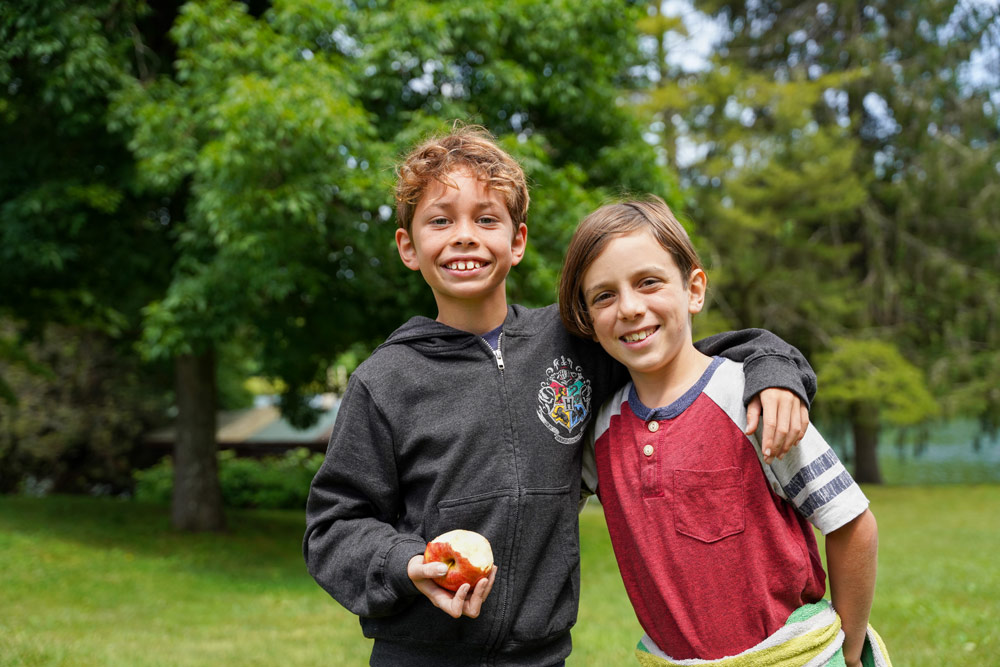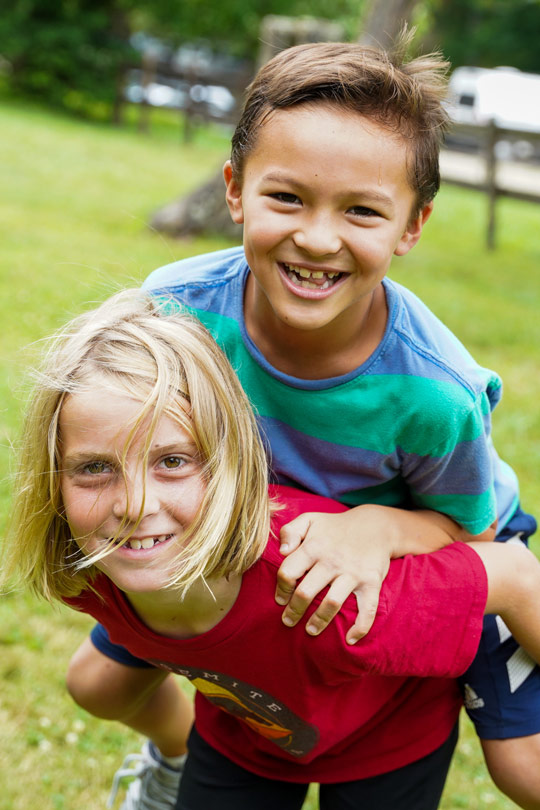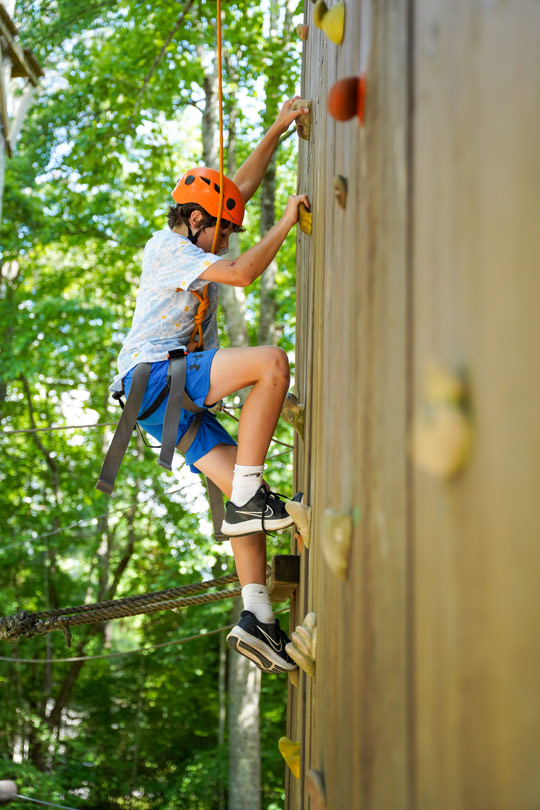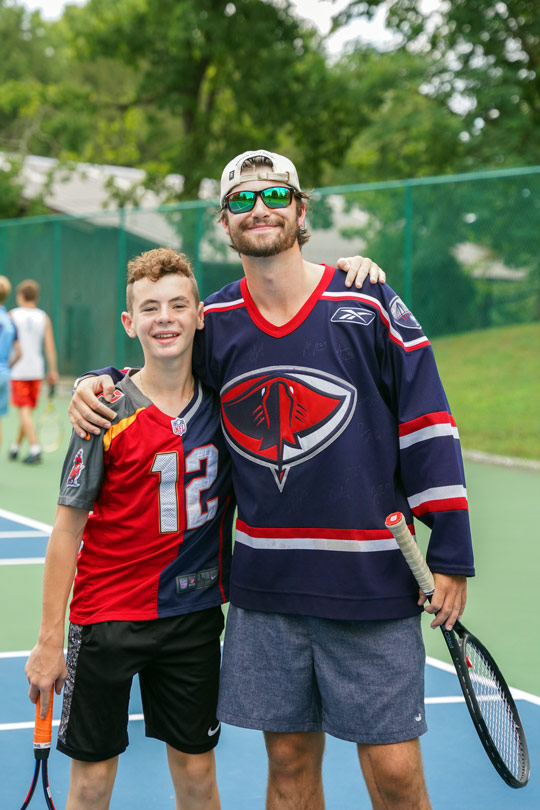We have built our camp programs with the needs of boys in mind. Each day of camp brings a mixture of new activities and established routines.
No alarms. No carpool lines. No uniforms. Just summer camp.
While no two camper schedules are the same, campers’ schedules all follow this rubric. Fixed points of the day are rising time and bedtime, meals, and rest-hour after lunch. A day’s schedule:
7:45 Rising Bell
8:15 Breakfast
9:00 Assembly
9:30 to 12:30 Activities
1:00 Lunch
1:45 to 2:45 Rest Hour
3:00 to 6:00 Activities
6:15 Dinner
7:15 to 8:15 Evening Program
8:15 Snack
9:30 Lights Out

Sundays at Camp High Rocks are a time for boys to recharge and reflect. Campers enjoy an extra thirty minutes of sleep and gather by the lake in the morning to reflect on our core values. The afternoon is filled with exciting activities, either camp-wide events like Carnival or smaller programs within Age Groups. The week concludes with a campfire, providing a moment for reflection and gratitude as we appreciate the world around us.
The camp was a great fit for our family. We appreciate the non-competitive element of the activities and that our son is encouraged to challenge himself. The camp setting is beautiful and the facilities are in good condition. There’s a mix of campers from different geographic areas.
The cabin provides a unique environment where boys, often from different backgrounds and places, come together to share the camp experience. Each counselor creates a space for campers to feel at home in the cabin. Each night, counselors conclude the day by facilitating a moment for campers to reflect on their day, allowing the group to connect on a deeper level and discuss their highs and lows. These check-ins foster a greater sense of community and support within the cabin.




Living in cabin groups is an excellent opportunity to forge lasting friendships while also gaining independence. Although not required, campers may want to come with a friend. You can request a cabin mate when you apply or when completing pre-camp forms in the spring. We’ll try to accommodate your request, but we can’t guarantee it. Cabinmate requests should be of similar age and grade. We aim for a mix of campers from different schools and hometowns in each cabin.
Knowing when your child is ready for sleepaway camp isn’t always as simple as hitting a certain age or milestone.


High Rocks is an authorized Special Use Permit Holder by the Pisgah, Nantahala, and Sumter National Forests. • Privacy • Site Map • Camp High Rocks © 2025